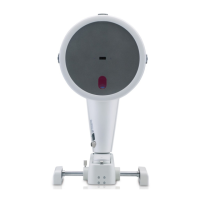2
10 Screening for refractive surgery by Prof. Michael W. Belin................................................47-63
10.1 Screening parameters, 4 Maps Refractive display......................................................................47
10.1.1 Suggested installation settings ...........................................................................................47
10.1.2 Proposed screening parameters ...........................................................................................48
10.1.3 Strategy on how to go through the exams ......................................................................49
10.2 Normal, astigmatic cornea ................................................................................................................49
10.3 Astigmatism on the posterior cornea .............................................................................................52
10.4 Spherical cornea...................................................................................................................................53
10.5 Thin spherical cornea ..........................................................................................................................54
10.6 Thin cornea ............................................................................................................................................55
10.7 Borderline case of keratoconus ........................................................................................................56
10.8 Displaced apex...................................................................................................................................... 57
10.9 Pellucid marginal degeneration .......................................................................................................58
10.10 Asymmetric keratoconus ....................................................................................................................59
10.11 Keratoconus with false negative findings on curvature map ..................................................61
10.12 Keratoconus greater in OD than OS ................................................................................................62
10.13 Classic keratoconus .............................................................................................................................63
11 Corneal Thickness Spatial Profile by Prof. Renato Ambrósio Jr .......................................64-79
11.1 Screening for ectasia by Prof. Renato Ambrósio Jr, Marcela Q. Salomão, MD...................67
11.2 Case 1: Fuchs’ dystrophy by Prof. Renato Ambrósio Jr, Marcela Q. Salomão, MD............72
11.3 Case 2: Ocular hypertension by Prof. Renato Ambrósio Jr,
Marcela Q. Salomão, MD................................................................................................................... 74
11.4 Case 3: Early Fuchs’ dystrophy with glaucoma by Prof. Renato Ambrósio Jr,
Marcela Q. Salomão, MD................................................................................................................... 76
11.5 Screening parameters by Prof. Renato Ambrósio Jr ..................................................................79
12 Belin/Ambrósio Enhanced Ectasia Display.............................................................................80-102
12.1 Why elevation is displayed by Prof. Michael W. Belin ...............................................................80
12.2 Simplifying preoperative keratoconus screening by Prof. Michael W. Belin,
Prof. Renato Ambrósio Jr, Andreas Steinmüller, MSc................................................................88
12.3 Interpretation of the Belin/Ambrósio Enhanced Ectasia Display............................................94
12.4 Pachymetry evaluation........................................................................................................................96
12.5 Ectasia susceptibility revealed by the Belin/Ambrósio Enhanced Ectasia Display.............96
12.6 Early ectasia with asymmetric keratoconus by Prof. Renato Ambrósio Jr,
Fernando Faria- Correia, MD, Allan Luz, MD...............................................................................100
13 Locating the cone by Prof. Michael W. Belin..............................................................................102
14 The corneal densitometry screen, Sorcha S. Ní Dhubhghaill, MB, PhD,
Jos J. Rozema, MSc, PhD......................................................................................................... 103-107
14.1 Keratic precipitates............................................................................................................................104
14.2 Position and depth of INTACS® rings............................................................................................106
14.3 DSAEK with specks at the interface..............................................................................................107
15 Using Pentacam® technology to evaluate corneal scars, planning and documenting
surgery outcomes by Arun C. Gulani, MD, MS.................................................................. 108-116
15.1 Case 1: Corneal scar with RK incisions and cataract...............................................................112
15.2 Case 2: Keratoconus with congenital cataract, high myopia and high astigmatism.....115
Table of contents

